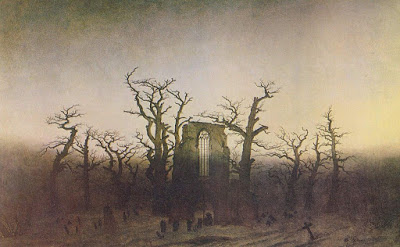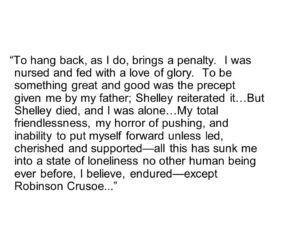
Leading Up to‘The Year Without Summer’
Northern Europe during the early nineteenth century (~1790-1830) encountered severe issues of climate change, where global temperatures reached a periodically low point, below that of normal. The highly explosive eruption of mount Tambora caused after effects of volcanic debris and dust which blocked the sun from hitting earth’s surface; “triggering what H.H Lamb calls one of the greatest world disasters associated with the climate”(227). The ’empire of ice’ by 1816 had conquered the minds of the Britons, releasing their fear of climate change. The debate over climate change came down to the many questions about geoengineering; Should humans intervene with nature?
By the beginning of the nineteenth century, the indication that climate change took place was agreed upon, but the cause was unknown. The debate started with polar ice being a sole factor in which the climatic temperatures were changing drastically, and society believed that to combat those temperatures they must all take part in agricultural improvements. Moving forward though, many started to believe that agricultural improvements instead was the “cause of climate deterioration” (Carroll, 215). In 1818 climate change still produced major social and political fears in Europe, mostly because the cause of this was still marked as unknown. In Frankenstein’s introduction, we hear from Walton who reads us letters he wrote to his sister while exploring the Arctic climate. In his travel letters, Walton mentions the “Arctic wind” which sets the stage for the entire book to follow. He also sets an example for many Europeans that seek the scientific discovery of the poles, showing them that the icy climate could be extremely dangerous. The Arctic wind mentioned here also plays a huge role in the controversy described in ‘Crusades Against Frost’ where the publics anxieties had stemmed from this ‘cold breeze’ that drifted through all northern Europe. One side of this debate believed that the ‘cold breeze’ was caused by the melting of the ice caps. When the ice caps melt, it causes the water to become colder, thus creating a colder breeze.
Siobhan Carroll in ‘Crusades Against Frost: Frankenstein, Polar Ice and Climate Change in 1818 explores the sciences that dealt with the phenomena of the Earth’s climate and its drastic environmental changes by reviewing quarterly articles written by John Barrow. John Barrow wrote articles in the Quarterly Review expressing his curiosity and need, to endure on an Arctic exploration. Barrow resided within the British government and told the public that there was no need for government action. His articles were to raise awareness to the controversy regarding climate change. Barrow helped finance the governments arctic expedition for the sole purpose of exploration. In “Erasmus Darwin’s ‘The Botanic Garden’ (1791) it has been stated that humans could delay the apocalyptic cooling of the globe, and perhaps forge a new cosmopolitan utopia, by uniting to destroy Arctic Ice”(Carroll, 212). Erasmus Darwin, unlike Barrow, shared his opinions about the danger of the climate change, making it known that something must be done. Darwin suggested in The Botanic Garden (1791) that to combat the icy climate, all European governments must work together. He believed that it was the duty of a man to destroy the icebergs and claimed that every country should exist as one in the fight against nature. Darwin fought for the “actual implementation of geoengineering schemes” (Carroll, 219).

The Era of Frankenstein
Mary Shelley’s novel Frankenstein could potentially be written as a reaction to human interference with nature. She writes this tale of a scientist whose greatest dream is to conquer the world of science where the limit of knowledge is unknown to mankind. Victors curiosity about discovering the secret of life lead to his downfall, where his creation ends up destroying him, and his entire world. Here, Shelley could be imitating that you get what you give, implying that human interference with nature could go one of two ways. Many believed that the climate within England had been changing, but the cause of this change posed the major question and debate. Europe’s fight against climate change had some believing that “agriculture improvement combated the dominion of frost” while others believed that “Britain’s modifications of local natures were the cause of climate deterioration.” The debate on human intervention within the natural world, along with ‘the year without a summer’ had many writers and theorists revising their previous work which before, was pro-intervene, whereas now they note that nature is not a force to be reckoned with. For example, Percey Bysshe Shelley was one to notice the “strange weather across the northern hemisphere in 1816”, causing him to change his thoughts on geoengineering and the human power to improve global climate change.
In Volume I of Frankenstein, we are introduced to the young Victor Frankenstein, and we watch his love and curiosity for science grow; “In other studies, you go as far as others have gone before you, and there is nothing more to know; but in a scientific pursuit there is a continual food for discovery and wonder”(Shelley, 30). In chapter four we analyze the creation of this monster that turns Victor’s dream into a nightmare. Here we can picture the sight of this horrifying monster, because once created, Victor runs away with utter disgust. We don’t come across the monster again until page 50, where Victor returns home to mourn the loss of his brother. At the sight of his brother’s murder the monster appears, and here Victor learns the capabilities of his creation. In both instances here, Shelley uses a storm to capture the moments before the monster returns to his creator, what could that imply? The effect of nature is used throughout Victors downfall, relating to the relapses he encounters between the different stages of his depression. Nature places an emphasis on the romantic period in which the novel was written.
Victors constant neglect on his creation allows for the monster to feel as if he rejected from human society; especially when in Volume II, we hear the monsters story. As the reader we come to empathize with the monster because we watch the rejection that it encounters as he ventures out into society after being neglected by his creator. In these chapters we watch the monster develop many skills involving the use of his senses. His daily secret encounter with the DeLacey’s helps him learn how to speak and eventually read as well. In his hovel, he learns all about society and what the relationship between a creator and his creation should be, thus learning what he really is, turning him against society. Since there is no one in the world who cares for him, the monster turns to Victor and asks him to make him happy, where he relates himself to the biblical Adam, as well as the fallen angel from Milton’s Paradise Lost. These references play a role in the monster’s fate from when he was brought to life, to his downfall feeling hated and sinned against by his creator. The monster asks for a mate, so he can feel love and affection, Victor argues with himself and the monster on the development of a new creation and ends up giving in only because he thinks it will get rid of his reoccurring nightmare.
The monster created within Frankenstein is sought out to be many things since first introduced to the public 200 years ago. My supplemental article reviewed the science behind climate change in 1818, the same year that Shelley wrote the novel Frankenstein. Both the novel and my supplemental article show a relationship between human nature and society, and throughout the book we follow the monster, and watch him grow based on the knowledge he gains from human interaction. The monster represents both the best and worst of human nature and mankind. The best when he is nourished and loved, and the worst when he is rejected and failed. When the monster came across rejection he described the same gloomy weather that Europe encountered around the year 1816; “Nature decayed around me, and the sun became heatless; rain and snow poured around me; mighty rivers were frozen; the surface of Earth was hard and chill and bare, and I found no shelter”(Shelley, 114). Frankenstein explores the nature of improvement found within science where Victor intervenes and reverses death, while my supplemental article explores the role of science behind climate change regarding the future of humans and nature. Romantic writers viewed climate change as something bigger than the present world they were living in. The empire of science and the ‘year without summer’ raised many debates regarding human intervention and the reverse of decay on our planet.
Discussion Questions:
1) Why do you think Shelley uses a ‘storm’ to indicate the warning that Victor will soon run into his creation?
2) Do you believe that human nature can successfully intervene and alter climate change?
3) What role do you believe nature plays within Frankenstein?
Works cited:
Shelley, Mary Wollstonecraft, 1797-1851. Frankenstein, Or, The Modern Prometheus : the 1818 Text. Oxford ; New York :Oxford University Press, 1998.
Siobhan Carroll (2013) Crusades Against Frost: Frankenstein, Polar Ice, and Climate Change in 1818, European Romantic Review, 24:2, 211-230, DOI: 10.1080/10509585.2013.766402










